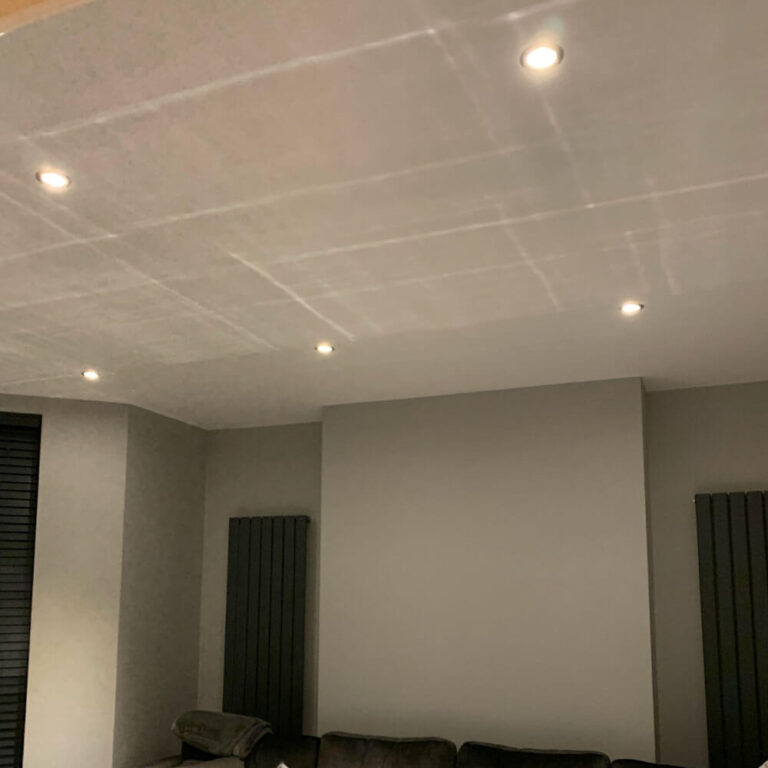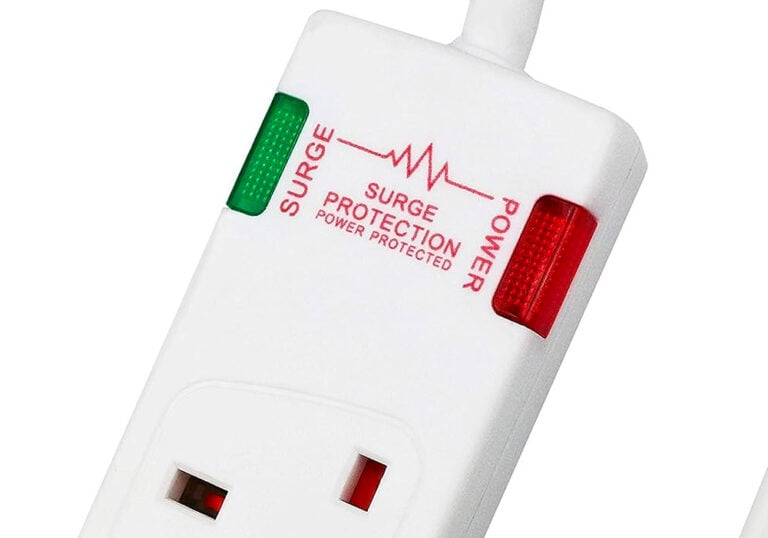What is a CRI Rating?
CRI Rating, or Colour Rendering Index Rating, is an essential aspect of lighting quality that impacts the appearance of colours under various light sources. It is a quantitative metric used to measure the ability of lamps, bulbs, and other light fixtures to display the true colours of objects in comparison to natural daylight. The CRI value ranges from 0 to 100, with a higher score indicating better colour accuracy and more natural appearance of colours.
Understanding CRI is vital in scenarios where colour perception is of significant importance, such as photography, retail stores, and art galleries. The difference between a high and low CRI can significantly influence the perception of objects, affecting aesthetics, mood, and even decision-making. By considering CRI ratings, you can make informed decisions regarding the lighting fixtures to use for specific applications in residential, commercial, and industrial settings.
Key Takeaways
- CRI Rating measures the accuracy of a light source in displaying the true colours of objects compared to natural sunlight.
- A higher CRI value indicates better colour rendering, making it crucial in applications where colour perception is key.
- Evaluating CRI ratings can help you choose appropriate lighting fixtures for a wide range of residential, commercial, and industrial purposes.
Understanding Colour Rendering Index
The Colour Rendering Index (CRI) is a numerical system that measures the ability of an artificial light source to accurately display colours in comparison to natural sunlight. It is rated on a scale from 0 to 100, where 0 represents no accurate colour rendering and 100 represents perfect colour rendering in relation to natural daylight. A higher CRI score means better colour representation and overall performance for a light source.
CRI is essential in various applications that require accurate colour representation, such as photography, interior design, art restoration, and neonatal care. When selecting lighting fixtures for your home or workspace, paying attention to CRI ratings can help you choose the ideal lighting solution for your particular needs.
Different types of light bulbs have varying CRI scores. For example, incandescent bulbs typically have a high CRI (>90), while compact fluorescent lights (CFLs) and LED bulbs can have varying CRI values, with some high-quality LED bulbs achieving CRI scores above 90. When shopping for light bulbs, you’ll often find the CRI rating indicated on the product packaging or specifications.
It’s important to note that CRI is not the only factor to consider when choosing a light source. The colour temperature, measured in kelvins (K), and the luminous efficacy, measured in lumens per watt (lm/W), are also essential properties that significantly impact the quality and efficiency of your lighting. A higher colour temperature corresponds to a cooler, bluish light, while a lower temperature produces a warmer, yellowish light.
In summary, when selecting a light source, pay attention to its CRI, colour temperature, and luminous efficacy to ensure you achieve the desired lighting quality and effect in your space.
CRI: Industrial Importance
The Colour Rendering Index (CRI) holds significant importance in various industries. It is a metric that quantitatively measures how accurately a light source reproduces the colours of objects compared to a reference light source. The CRI rating ranges from 0 to 100, where a higher rating indicates more accurate colour rendering.
In industrial settings, such as shipping yards, factories, and warehouses, ensuring accurate colour representation is crucial for maintaining safety and efficiency. High CRI lighting allows workers to clearly see finer details like markings on boxes, manuals, containers, and other objects. This precision reduces the risk of errors and accidents while boosting overall productivity.
Apart from safety and productivity, choosing lights with higher CRI ratings in commercial spaces can enhance the appearance and ambiance of the area. High-quality lighting makes it easier to discern colours and textures, leading to a more visually appealing and comfortable environment. This is particularly useful in retail stores and galleries, where accurate colour rendering helps to showcase products and artworks in their true hues.
To sum up, understanding the importance of CRI in industrial and commercial applications is essential for making informed decisions when purchasing lighting equipment. By opting for high CRI-rated lights, you can ensure better safety, productivity, and visual appeal in your workplace.
High vs Low CRI
When choosing lighting for your space, it’s important to consider the Colour Rendering Index (CRI) of the light source. A higher CRI rating means that the light will display colours more accurately and naturally, while a lower CRI rating may cause colours to appear dull or distorted.
High CRI lighting is particularly beneficial in spaces where colour accuracy is crucial, such as photography studios, art galleries, and retail spaces showcasing products. A light source with a CRI of 90 or above is considered to provide excellent colour rendering, ensuring that the true colours of objects are well represented under the light. High CRI lighting can also create a more pleasant and comfortable atmosphere in living spaces, as it closely replicates the appearance of natural light.
On the other hand, low CRI lighting may not be suitable for colour-critical applications, as they struggle to portray colours accurately. Light sources with a CRI rating of 70 or below can make spaces feel dull or uninviting, and may even cause eye strain over time. However, low CRI lighting can be more energy-efficient and cost-effective, making it suitable for certain situations where colour accuracy isn’t a priority, such as outdoor lighting or utility spaces.
To make an informed decision about the CRI rating that best suits your needs, consider the following:
- Determine the main purpose of the lighting in your space.
- Research the CRI ratings of different light sources, such as LED, halogen, incandescent and fluorescent lamps.
- Weigh the importance of colour accuracy against other factors, such as energy efficiency and cost.
By considering these factors, you can confidently select a light source with the appropriate CRI rating for your specific needs and create an environment that achieves both visual appeal and functionality.
Factors Impacting CRI
There are several factors that can impact a light source’s Colour Rendering Index (CRI) rating. To help you understand these factors, we’ve compiled a list of the key aspects that can affect CRI.
Age of the light source: As a light source ages, its spectral output can change, leading to a decrease in its CRI over time. These changes can cause the colours of objects illuminated by the light to appear differently than they would under a newer light source with a higher CRI.
Brightness: The brightness of a light source can play a role in its CRI rating. Generally, brighter light sources are more likely to have a higher CRI, as they are better at illuminating colours accurately. However, the relationship between brightness and CRI isn’t always straightforward, so it’s important to consider other factors as well.
Light source type: The type of light source can have a significant impact on CRI. For example, LED bulbs often have a higher CRI rating than older technologies like incandescent or fluorescent bulbs. This is because LEDs are designed to provide a more even spectrum of light, which leads to better colour rendering.
Colour temperature: Light sources with different colour temperatures can produce different CRI ratings. Generally, a higher colour temperature corresponds to a cooler, bluer light, while a lower colour temperature results in a warmer, more yellow light. Each type of light can produce varying degrees of colour accuracy, so it’s essential to consider the specific colour temperature when evaluating a light source’s CRI.
Manufacturer quality: The quality of the light source manufactured can also impact CRI ratings. High-quality bulbs and fixtures, made with precise engineering and quality materials, are more likely to have a higher CRI. Therefore, it’s advisable to choose reputable brands and manufacturers when selecting a light source for a colour-critical application.
Keep in mind that a CRI rating of 80 or above is generally considered suitable for indoor lighting applications. For more colour-critical environments such as art galleries, photography studios, or retail spaces, a CRI of 90 or above is recommended.
Measurement of CRI Rating
The Colour Rendering Index (CRI) is a quantitative measure that evaluates how well a light source reveals the true colours of objects when compared to a natural or standard light source. CRI is measured on a scale from 0 to 100, with higher values indicating better colour accuracy and fidelity. As a rule of thumb, CRI values of 90 and above are considered excellent, while scores below 80 are generally considered poor.
To measure CRI, a light source’s ability to illuminate a set of standard colour samples is examined. These samples are often referred to as Test Colour Samples (TCS). The illuminated colours are then compared to the same samples under a reference light source, like natural daylight or incandescent light. The difference in colour appearance between the test and reference light sources is quantified, and an average value is calculated for the set of samples. This average value becomes the CRI score.
It’s important to note that CRI is not the only factor that dictates how well a light source portrays colours. The colour temperature and light intensity also play significant roles in overall performance. However, CRI remains a helpful metric for comparing different lights when it comes to colour rendering capabilities.
When selecting light sources for your home, office, or other colour-critical applications, it’s worth considering the CRI rating in addition to other factors such as energy efficiency and longevity. A higher CRI rating will ensure a more accurate representation of colours, enhancing your overall lighting experience.
Practical Applications of CRI
CRI, or Colour Rendering Index, is a crucial aspect to consider when selecting lighting for various applications. This metric, ranging from 0 to 100, indicates how accurately a light source illuminates the true colours of objects when compared to a natural light source. The higher the CRI rating, the more accurate and vivid the colours appear. In this section, we’ll explore some practical applications of CRI in various settings.
Art Galleries and Museums: In these environments, accurate representation of colour is essential for preserving and displaying artwork. High-quality lighting with a CRI of 90 or above enables artists and curators to showcase their work and maintain the integrity of the colours, ensuring that viewers experience the intended depth and hues of the art.
Retail Outlets: Stores often rely on lighting to highlight products and attract customers. A higher CRI can make colours appear more vibrant, enticing shoppers to make purchases. From clothing to home décor, high CRI lighting can make a significant impact on how products are perceived and thus influence sales.
Healthcare Facilities: In medical settings, accurate colour portrayal is crucial for various tasks, such as diagnosing skin conditions, matching tissue hues during surgery, or evaluating patient symptoms. A high CRI light source can help medical professionals in making more accurate assessments and decisions, leading to improved patient care.
Hospitality Industry: Hotels, restaurants, and other spaces catering to guests often use lighting to create a welcoming atmosphere. High CRI lighting can contribute to a comfortable environment, as it enhances the appearance of food, furnishings, and other elements that impact guests’ experiences.
To summarise, the Colour Rendering Index plays a vital role in various applications, including art galleries, museums, retail outlets, healthcare facilities, and hospitality settings. Selecting lighting with a high CRI rating can positively impact both the visual quality and functionality of your space, ensuring that colours are accurately represented and creating the desired atmosphere.
Limitations of CRI
CRI, or Colour Rendering Index, is a useful metric for assessing the quality of a light source. It measures how accurately a light source can reveal the colours of various objects compared to a natural or standard light source. The CRI ranges from 0 to 100, with 100 representing the most accurate colour rendering, closely resembling natural daylight. However, there are some limitations when using CRI as the sole indicator of a light source’s performance.
Firstly, the CRI is an average value derived from a specific set of test colours. The distribution of these colours might not necessarily represent the colours found in all environments. Consequently, a light source with a high CRI might not recreate the colours of certain objects as accurately as you might expect.
Secondly, the CRI is based on a comparison with a reference light source, which might not always be natural daylight. For example, low colour temperature light sources, such as incandescent lamps or warm white LEDs, are compared to a Planckian radiation source. The results, therefore, might not be directly comparable to those of sources with different colour temperatures.
Another limitation is that CRI does not take into account the human eye’s sensitivity to different wavelengths of light. Two light sources with the same CRI may produce different visual results, depending on the specific wavelengths present in their spectra. This can lead to situations where a light source with a lower CRI appears to better represent colours in a particular environment compared to a source with a higher CRI.
Lastly, CRI does not adequately address colour saturation and contrast, which are essential factors in determining how vibrant and appealing colours appear. A light source with a high CRI may still have deficiencies in these areas, potentially leading to less desirable lighting outcomes.
In conclusion, while CRI is a valuable metric, it has its limitations. It is essential to consider factors other than CRI when selecting a light source for your specific application, such as colour temperature, wavelength distribution, colour saturation, and contrast.
Future of CRI Rating
The Colour Rendering Index (CRI) has been a vital tool for measuring the quality of light produced by various light sources. As technology progresses, the future of CRI ratings will likely see further improvements and refinements, allowing you to make even more informed choices when selecting your lighting solutions.
One significant development in the lighting industry is the rise of LED technology. LEDs are becoming increasingly popular for their energy efficiency, long lifespan, and customisability. As LED technology improves, the CRI ratings of LEDs are expected to inch closer to the perfect score of 100, providing you with a wider range of high-quality lighting options.
Another area of focus for the future of CRI ratings is the development of alternative or complementary metrics. One such metric is the TM-30, which offers a more comprehensive evaluation of colour rendering. This metric takes into consideration not only colour accuracy but also gamut and fidelity, helping you to achieve a more balanced and visually appealing lighting environment.
The integration of smart lighting systems is also shaping the future of CRI ratings. Advanced lighting controls, sensors, and monitoring devices will enable more precision in adjusting the colour quality and brightness levels, allowing you to fine-tune your lighting environment according to your specific needs and preferences.
As sustainability becomes a key priority, the future of CRI ratings may also involve considering the environmental impact of lighting products, encouraging manufacturers to produce greener, more eco-friendly options. This could lead to the development of new classifications or rating systems that take into account energy efficiency, recyclability, and overall environmental footprint.
With these developments on the horizon, the future of CRI ratings holds much promise, ensuring that you continue to have access to the best possible lighting solutions for your home, office, or commercial space.





